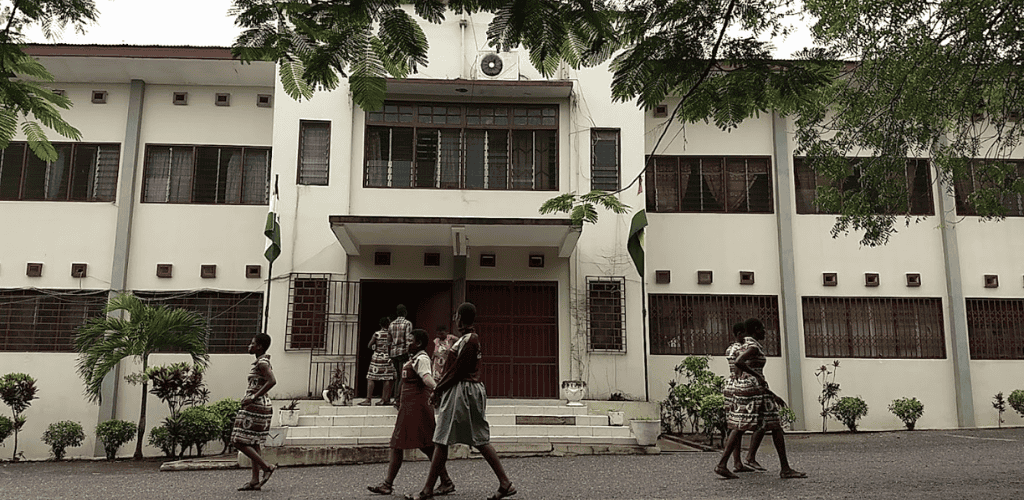Key takeaways
- Ghana has four primary secondary education pathways, including SHS, SHTS, TVET, and STEM.
- The secondary education curriculum includes core subjects like English, Mathematics, Integrated Science, and Social Studies and electives in preferred programmes.
- Currently, there are two key policies: the Free SHS Policy and the Ghana Smart Schools Project.
Secondary education is crucial in equipping students in Ghana with relevant knowledge for their future careers. In this guide, we provide an overview of secondary education in Ghana: pathways, curriculum, and challenges.
What is secondary education in Ghana?
In Ghana, secondary education is the next level available to students who complete their basic education and write the Basic Education Certificate Examination (BECE).
It is a three-year educational phase that covers an extensive curriculum and prepares students for the West African Senior School Certificate Examination (WASSCE).
Passing the WASSCE transitional exam is a requirement for students who wish to pursue higher education or training in vocational fields.
Ghana’s secondary education pathways

Ghana’s secondary education offers four main pathways that cater to different educational needs and career journeys. These include the following:
#1 — Senior High School (SHS)
Senior High School is the most common type of secondary education in Ghana. It spans three academic years and prepares students for tertiary education.
Students in SHS study four core subjects: English, Mathematics, Integrated Science, and Social Studies. They also take Physical Education and Information and Communication Technology (ICT). Besides these, they must pick four elective subjects from their preferred course.
The table below shows the available elective subjects for each course or programme.
| Course | Elective subjects |
| General Arts | Geography, History, Government, Literature in English, Ghanaian language, Christian Religious Studies, Economics, Elective ICT, Elective Mathematics, French |
| General Science | Biology, Elective Mathematics, Chemistry, Physics, Geography, Elective ICT |
| General Agriculture | Biology, Physics, Elective Mathematics, Geography, Elective ICT, Fisheries, Forestry, Crop Husbandry and Horticulture, Animal Husbandry |
| Business | Financial Accounting, Business Management, Principles of Cost Accounting, Elective Mathematics, Economics, French/Music. |
| Visual Arts | General knowledge in arts, Ceramics, Picture making, Graphic design, Basketry, Leatherwork, French, Economics, Sculpture, Textiles, and Jewellery. |
| Home Economics | Management in living, General Knowledge in Art, Economics, French/Music, Food and Nutrition, Clothing and Textiles, Biology, Elective Mathematics, Chemistry, Textiles |
Senior High Schools in Ghana can be public or private. Public senior high schools are categorised into four groups (A, B, C, and D) based on subscription rates; how often students choose them, and not school quality.
Category A is for highly popular schools that receive more applications than they can accept, B is for schools with moderate demand, C is for less popular schools, and D is for local day schools within 16km of students’ homes.
Students writing the BECE must select six senior high schools, ranking them in order of preference according to the Ghana Education criterion for the academic year.
#2 — Senior High Technical Schools (SHTS)
The Senior High Technical Schools (SHTS) curriculum emphasises both intellectual and technical training. In addition to the specialised Technical programme, they offer all the courses available in Senior High Schools.
Subjects under the Technical programme include Technical drawing, Elective ICT, Electronics, Building Construction, Applied Electricity, Auto Mechanics, Chemistry, Woodwork, Metalwork, and Physics.
Like Senior High Schools, students transitioning from their basic education can choose Senior High Technical Schools as part of their six-school selection for school placement.
#3 — Technical and Vocational Education and Training (TVET)
Technical and Vocational Education and Training (TVET) schools equip students with practical skills, technical knowledge, and vocational competencies for employment in specific industries.
The curriculum provides skills in trade areas such as:
| Trade | Programmes |
| Mechanical Engineering | Auto-body Works, Auto Mechanic/Motor Vehicle Engineering, Heavy Duty Mechanics, Industrial Mechanics, Small Engines Technology, Welding and Fabrication Technology, Agricultural Mechanization Technology, Refrigeration & Air-Condition Technology |
| Electrical Engineering | Electrical Engineering, Electrical Machine/Motor Rewinding, Electronics Engineering, Solar Photovoltaic Technology, Mechatronics Engineering |
| Information Technology | Computer Hardware and Software, Information Technology, Computer Networking, Software Development, Digital Designing Technology, Printing Technology |
| Hospitality/ Fashion | Cosmetology, Fashion Designing Technology, Hospitality & Catering Management, Textile Technology, Graphics Design Technology, Tourism Management, Fine Arts – Painting, Jewellery, Hairdressing, Beauty Therapy |
| Building | Building Construction Technology, Furniture Design and Construction, Architectural Drafting, Creative Art Technology, Plumbing & Gas Technology, Upholstery, Wood Technology, Architectural Drafting, Biodigester Construction |
| Business | Business Secretarial, Business Accounting, Business Information Technology, Database Management, Business Systems Technology |
Students who complete these programmes receive a certificate from the Ghana Education Service (GES), Commission for Technical and Vocational Education and Training (CTVET), or National Vocational Training Institute (NVTI).
Both Senior High Technical Schools and Technical and Vocational Education and Training schools focus on technical and vocational skills. However, there are a few differences:
| SHTS | TVET | |
| Curriculum | Combines general education subjects with technical courses | More specialised, with a strong focus on vocational skills |
| Career pathways | Graduates can advance to tertiary education for further studies | Graduates often enter trade professions or apprenticeships |
| Certification | Students take WASSCE | Graduates earn certificates issued by CTVET, GES, or NVTI. |
For school selection at the basic education level, candidates who wish to offer purely TVET programs must select all six TVET institutions from categories A, B, and C. All TVET institutions are boarding schools.
#4 — Science, Technology, Engineering, and Mathematics (STEM)
The Ministry of Education launched its STEM agenda in 2020. In January 2022, the government of Ghana inaugurated the first STEM school—the Accra High STEM School.
There are currently seven STEM schools operating fully in Ghana:
- Awaso STEM School, Western Region
- Abomosu STEM School, Eastern Region
- Bosomtwe Girls STEM School, Ashanti Region
- Bosomtwe STEM School, Ashanti Region
- Koase Sec/Tech STEM, Ahafo Region
- Accra High STEM, Greater Accra Region
- Kpesemkpe STEM School, North East Region
STEM schools in Ghana prepare students for careers in high-demand sectors, such as engineering, healthcare, information technology, and research.
The curriculum leans heavily toward academic and practical learning in science and technology, offering core subjects with electives in Biomedical Science, Engineering, Robotics, and Aviation/Aerospace.
Note: A new secondary education curriculum (for SHS, SHTS, and STEM schools) is set to be rolled out in the 2024/2025 academic year.
How other countries compare
Ghana’s secondary school structure aligns with systems in other African countries like Nigeria, which has a three-year Senior Secondary School programme, and Kenya’s secondary education system, which focuses similarly on core and elective subjects. However, the content of the curricula differs.
In countries like the UK, secondary education begins earlier and includes a broad curriculum. Students sit for the General Certificate of Secondary Education (GCSE) exams afterward and then pursue two years of A-Level studies or vocational training to prepare for university or specific career paths.
In the US, high school (grades 9 to 12) allows students to study core subjects like English, Mathematics, Science, History, and other electives. Students also prepare for college entrance exams like the SAT or ACT, which play significant roles in university admissions.
Government policies and initiative
Over the years, the Government of Ghana has introduced several policies and initiatives to enhance access and quality in secondary education. Here are the three most crucial:
Free Senior High School (Free SHS) Policy
The Free Senior High School (Free SHS) Policy was introduced in September 2017 to make public secondary education accessible to every child in Ghana by removing the financial constraints of school fees and expenses.
The policy’s rationale is based on Article 25(1)(b), which states that “Secondary education in its different forms, including technical and vocational education, shall be made generally available and accessible to all by every appropriate means, and in particular, by the progressive introduction of free education.”
The Free SHS program is funded by Ghana’s national budget and supported by the Ghana Education Trust Fund (GETFund). It covers the full cost of tuition, textbooks, food, utility, and boarding fees. This policy has increased enrollment, with about 3,135,754 students benefiting from free secondary education.
Ghana Smart Schools Project
The Ghana Smart Schools Project aims to integrate technology into secondary education.
The objectives are to enhance teaching and learning through digitalisation, foster digital literacy, and equip students with the skills needed to succeed in an increasingly digital world.
It was launched on 25th March 2024 and funded by the Ghana Investment Fund for Electronic Communications (GIFEC). The initial phase supported 30 secondary schools, with Opoku Ware Senior High School being the first smart school.
The project provides secondary schools with internet connectivity and tablets. It includes digital resources and educational software aligned with the curriculum and provides ongoing training for teachers to improve their digital teaching skills.
Secondary Education Improvement Project (SEIP)
The Secondary Education Improvement Project (SEIP) was launched in 2014 with support from the World Bank to increase enrollment and improve the quality of selected low-performing SHSs.
The project focused on building and upgrading secondary schools in underserved areas, providing scholarships for students from low-income families, enhancing curriculum, and training teachers.
SEIP contributed to a marked improvement in enrollment, retention, and completion rates in targeted districts as schools in such areas benefitted from new facilities.
The project ended in 2021 with 23 new Community Day SHSs, upgraded 125 existing ones, and scholarships for students from low-income backgrounds.
Secondary education challenges
While Ghana has made significant strides in secondary education, there are still challenges that need to be addressed:
- Overcrowding in schools: Free SHS led to a surge in enrollment without a commensurate increase in facilities and resources. This has strained classrooms and dormitories and reduced overall effectiveness as teachers struggle to support students adequately.
- Less qualified teachers: The increase in student enrollment has outpaced the availability of qualified teachers. Some schools now rely on underqualified teachers to fill gaps. Many teachers also don’t have access to professional re-training opportunities, affecting the quality of education students receive.
- Inadequate infrastructure and resources: Boarding schools face food supply challenges due to budget constraints and high student populations.
FAQs
What is SSCE in Ghana?
SSCE was formerly the examination students took at the end of Senior Secondary School. The WASSCE later replaced it.
What is the Education (Amendment) Act, 2010 (Act 802)?
The Education (Amendment) Act, 2010 (Act 802) is an amendment to the Education Act, 2008 (Act 778) and reduced the duration of SHS from four years to three years.
How many secondary schools are in Ghana?
There are about 900 senior secondary schools in Ghana.
Conclusion
Ghana’s secondary education system has made significant strides through the Free SHS Policy and diverse educational pathways, including TVET and STEM programs, expanding access to more students than ever before.
While progress in infrastructure and accessibility is evident, addressing challenges like overcrowding and teacher qualification gaps will be crucial for the system’s continued improvement.












1 Comment. Leave new
Well I truly enjoyed reading it. This post procured by you is very effective for good planning.